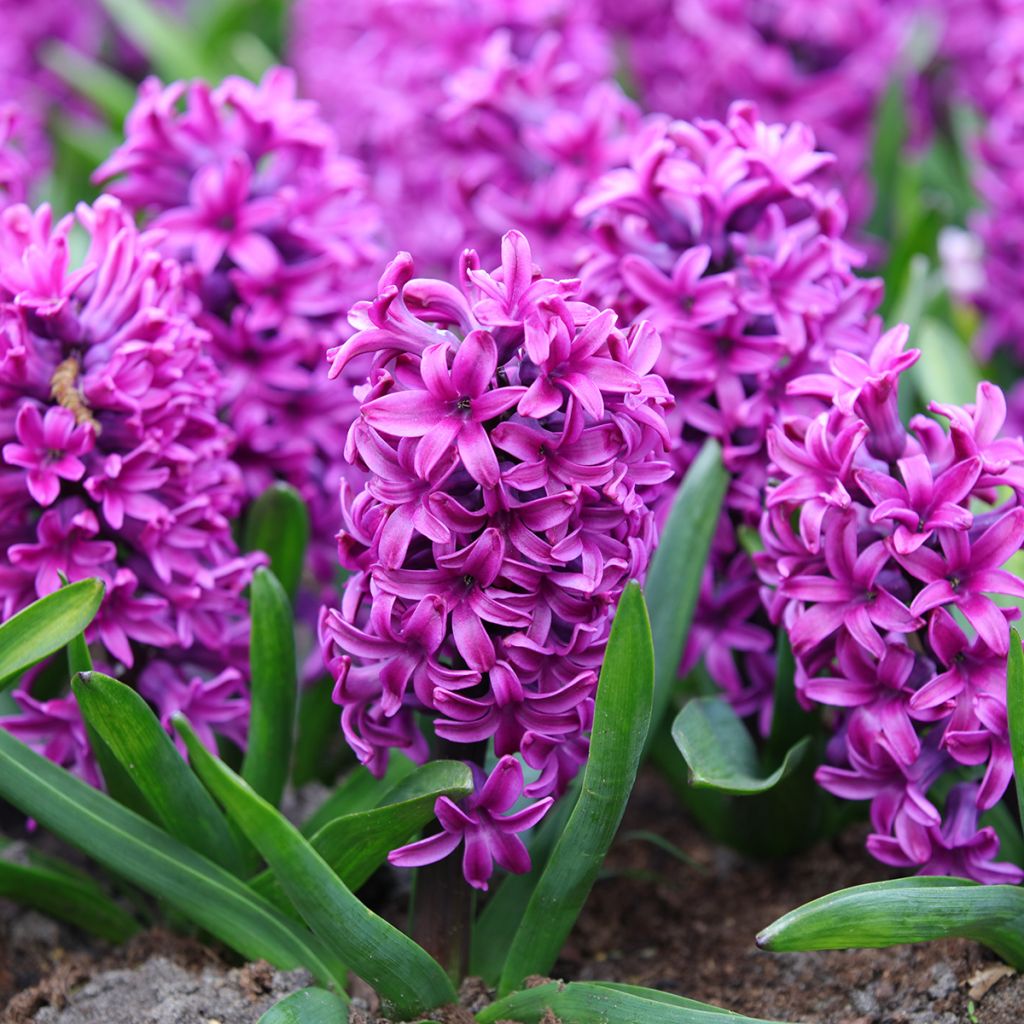

Hyacinthus Miss Saigon - Garden Hyacinth
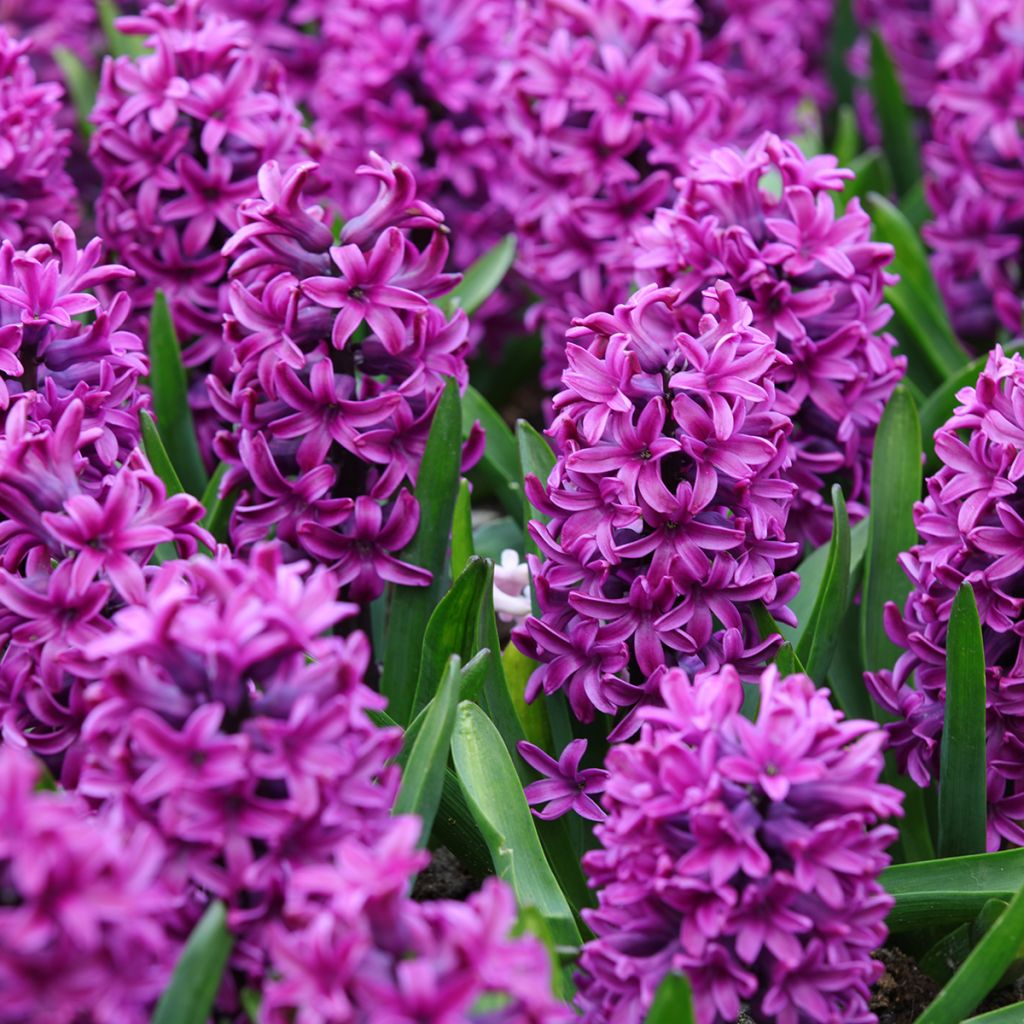

Hyacinthus Miss Saigon - Garden Hyacinth
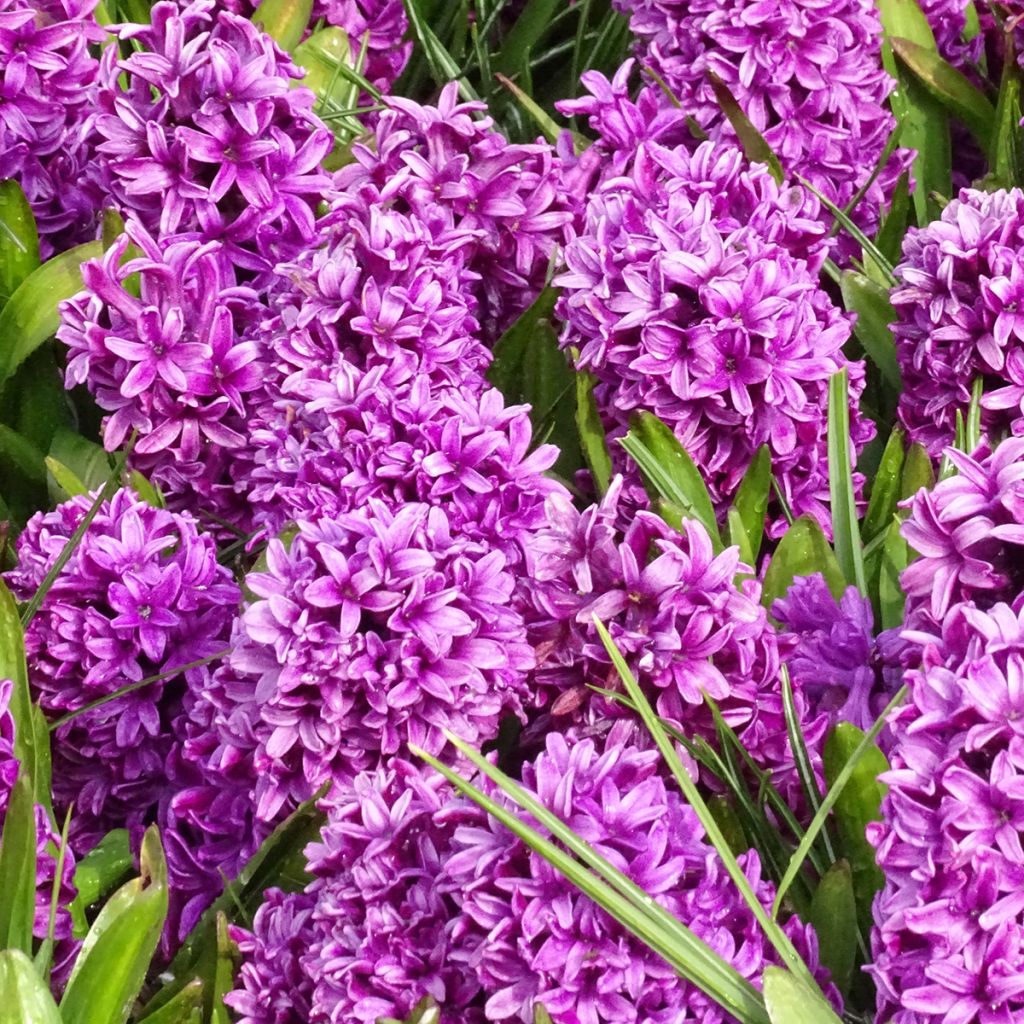

Hyacinthus Miss Saigon - Garden Hyacinth
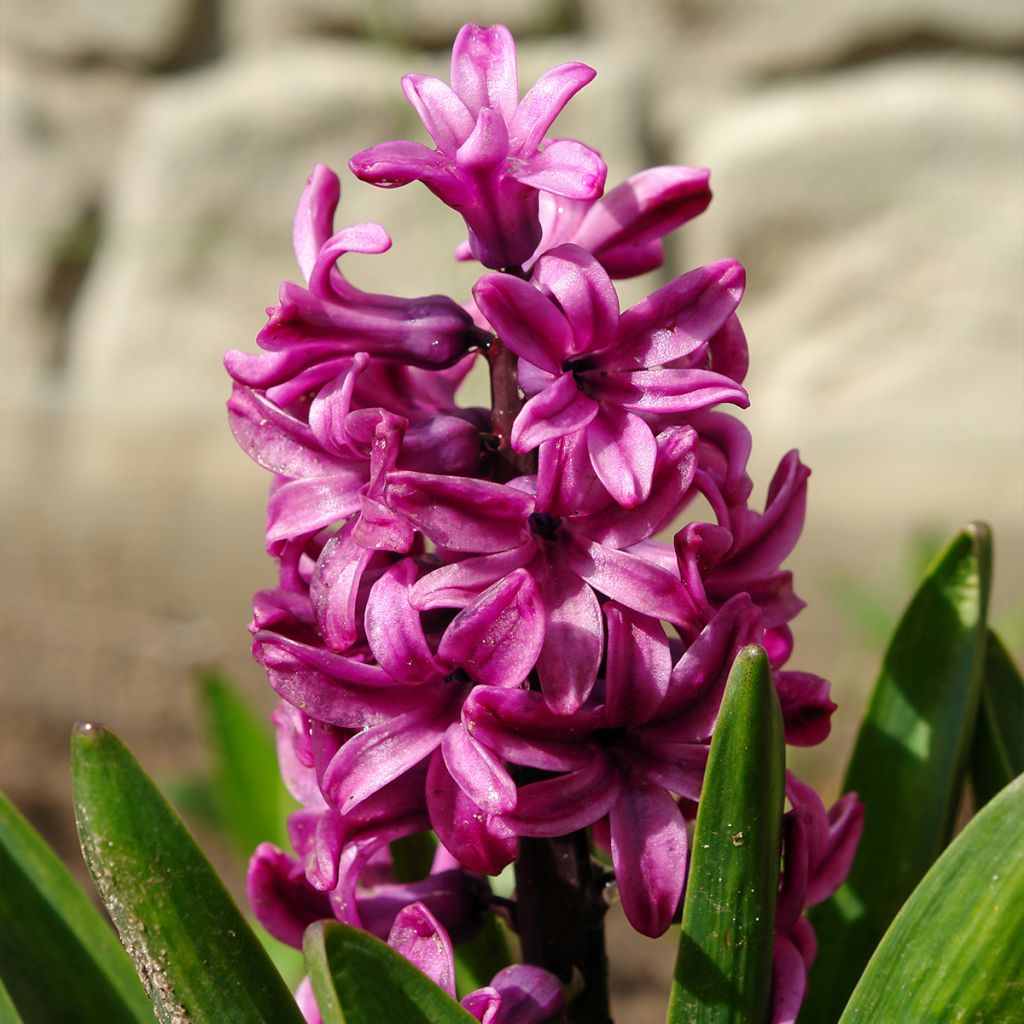

Hyacinthus Miss Saigon - Garden Hyacinth
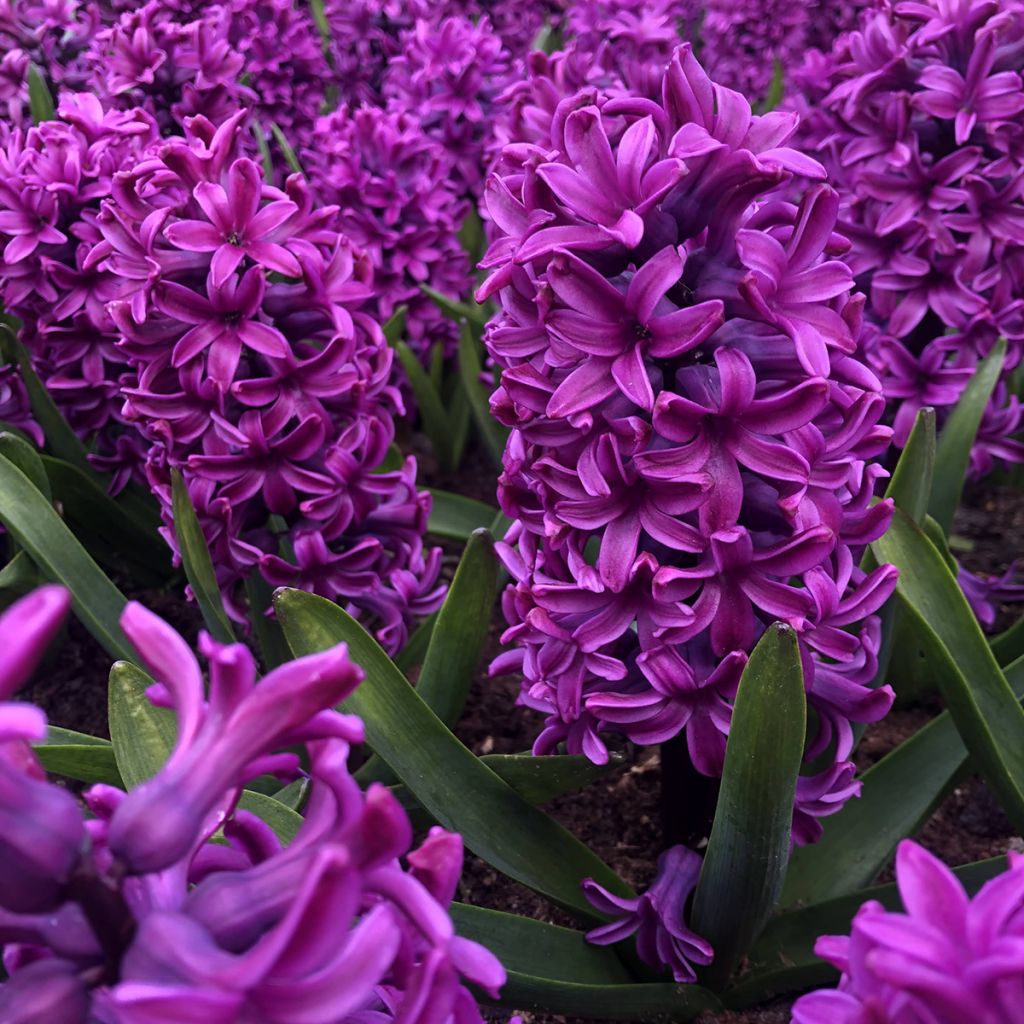

Hyacinthus Miss Saigon - Garden Hyacinth
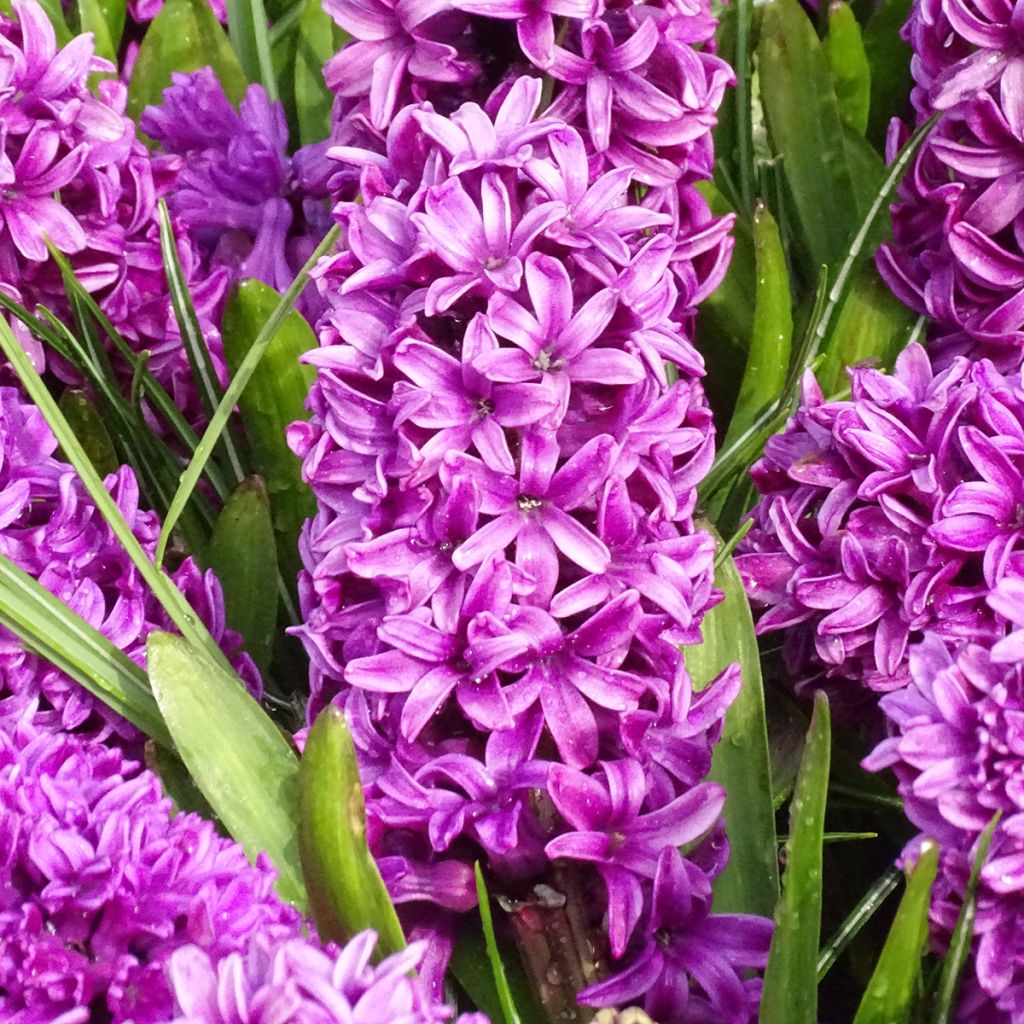

Hyacinthus Miss Saigon - Garden Hyacinth
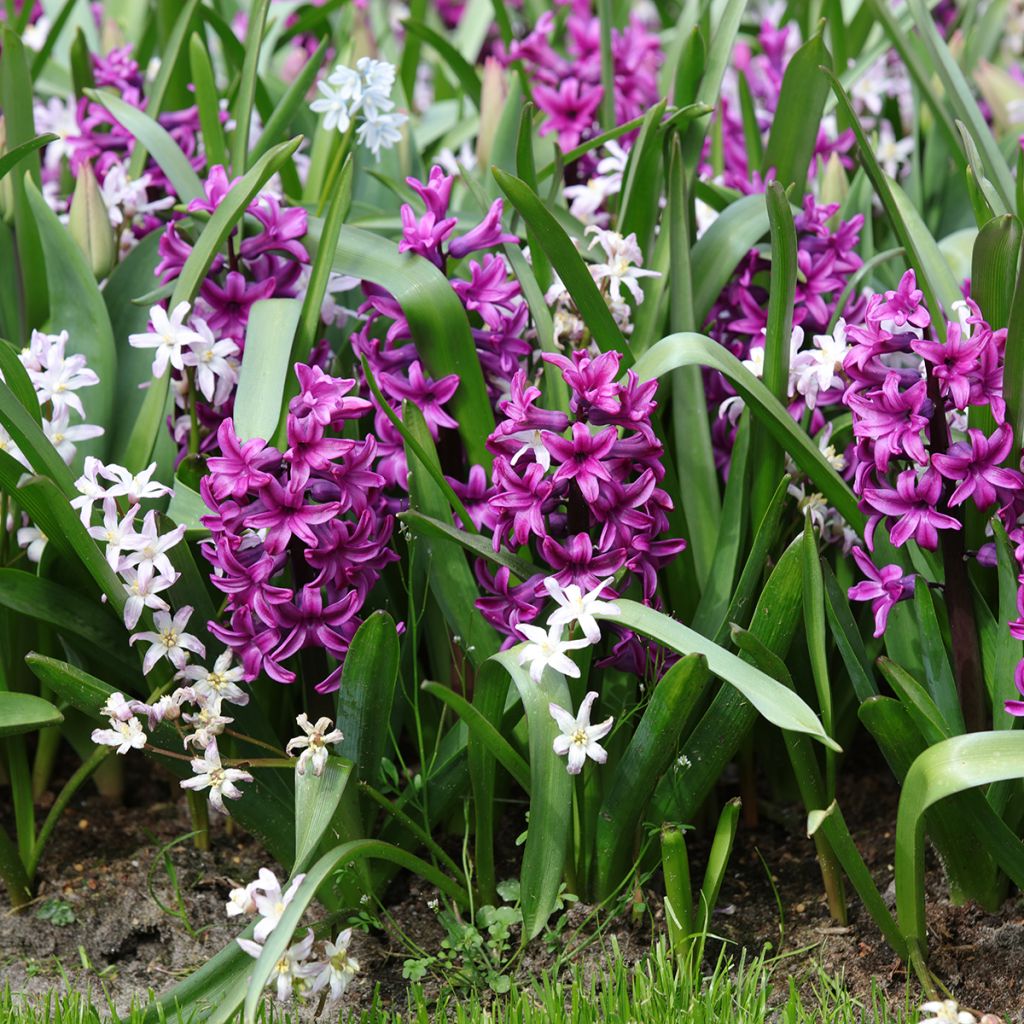

Hyacinthus Miss Saigon - Garden Hyacinth
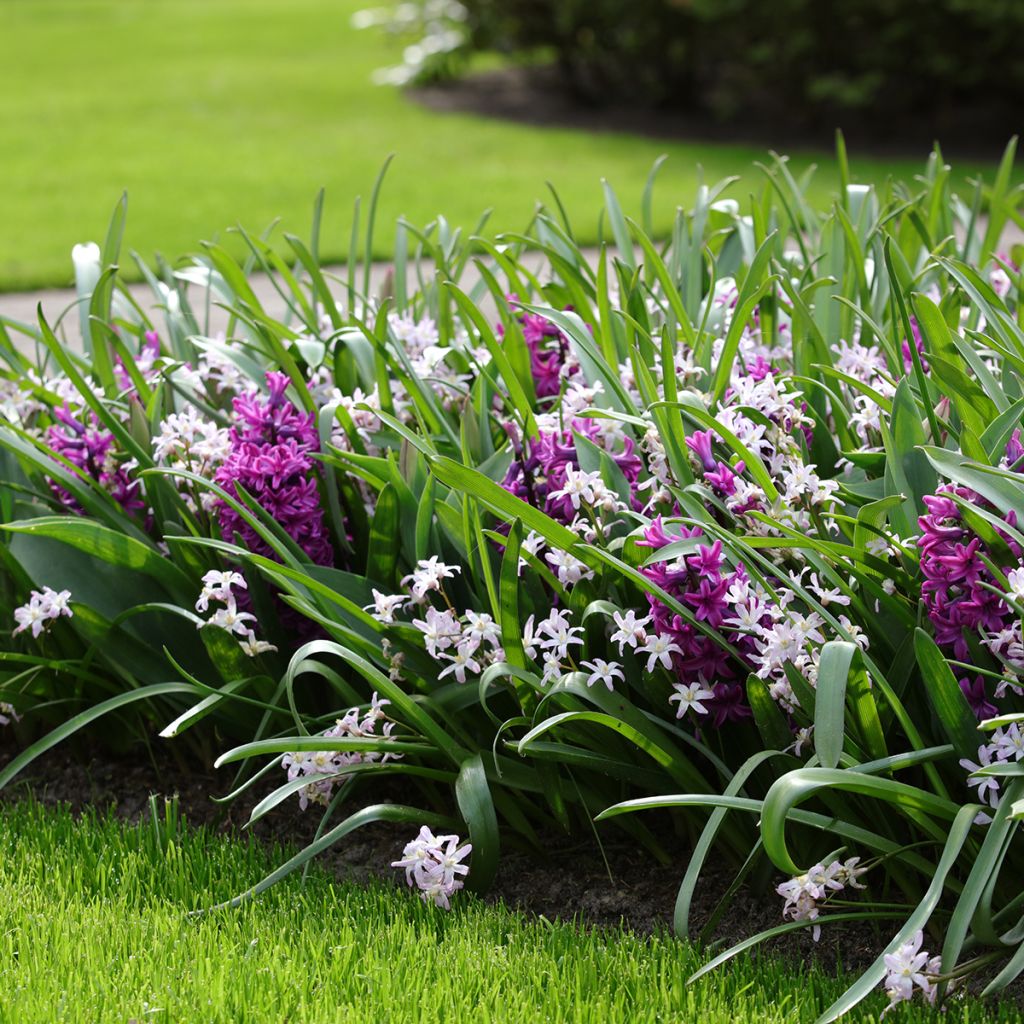

Hyacinthus Miss Saigon - Garden Hyacinth
Hyacinthus Miss Saigon - Garden Hyacinth
Hyacinthus x orientalis Miss Saigon
Common Hyacinth, Garden Hyacinth
This plant carries a 6 months recovery warranty
More information
We guarantee the quality of our plants for a full growing cycle, and will replace at our expense any plant that fails to recover under normal climatic and planting conditions.
From €5.90 for pickup delivery and €6.90 for home delivery
Express home delivery from €8.90.
Does this plant fit my garden?
Set up your Plantfit profile →
Description
Hyacinthus orientalis 'Miss Saigon' is a garden hyacinth, usually intended to be grown outdoors, and is here prepared to bloom early indoors. This allows its flowering to be shifted from March to January, in order to enjoy its beautiful flowers in the middle of winter! The large violet inflorescences are particularly ornamental, and furthermore, they emit a delightful fragrance in the house. It will be perfectly at home in a bright and cool room, where it will enhance the space for a few weeks.
While the Oriental Hyacinth is no longer widely cultivated, this species, native to the Middle East and Mediterranean regions, has given rise to countless cultivars, highly appreciated in gardens for their delightful spring flowering or in floristry for their forcing ability.
Formerly classified among the Liliaceae, the genus Hyacinthus is now classified in the Asparagaceae family, along with asparagus, as well as Agave and Yucca. This plant has a large oval bulb and forms a clump of narrow, elongated, shiny green leaves. Starting in January indoors (or March outdoors), a robust flower stalk, 20cm (8in) long, emerges from the clump of leaves. It becomes covered in a multitude of small star-shaped flowers, borne on short peduncles, forming a dense cluster measuring 8 to 10cm (3 to 4in) in diameter. Each flower consists of a tube at the base, which opens at the other end into a star-shaped corolla, made up of six elongated, pointed petals. The inflorescence has a violet colouration, of great beauty, very attractive during the dark days of winter. In addition to this, it has a strong fragrance that adds to the appeal of this bulbous plant. The foliage is deciduous after flowering, and it is at this time that the bulb, whose reserves are depleted, enters dormancy. The forcing technique involves exposing the bulbs to cold temperatures for several weeks, starting at the end of summer, in order to break their dormancy and induce the flowering process before the normal time.
The hyacinth is probably the easiest bulbous plant to force, allowing its flowering to be brought forward to the heart of winter. Therefore, it deserves a prime spot in a very bright room, away from any sources of heat.
Combine it with other bulbous plants to create a flowering winter decor. Crocuses also lend themselves well to forcing, as does the Snowdrop (Galanthus nivalis) with its trailing white bell-shaped flowers, full of romance. The vibrant Daffodils, with their bright yellow, orange, or white flowers, are also good candidates for forcing. To add volume to your decor, consider adding some branches of Cornus stolonifera 'Flaviramea', a Cornus with bright yellow wood in winter.
Hyacinth flowers are edible, both raw and cooked, and have a slightly mucilaginous texture. They can be crystallized with sugar or added to fruit salads, according to taste. In the past, they were considered a delicacy and could be found under the name "confeit of Constantinople hyacinths".
Report an error about the product description
Hyacinthus Miss Saigon - Garden Hyacinth in pictures
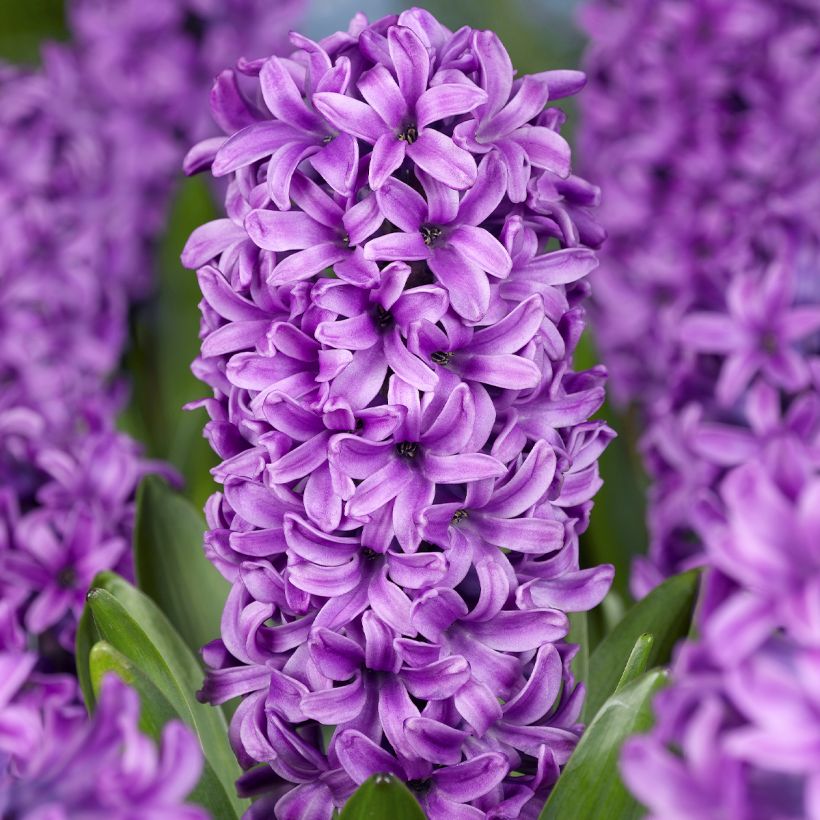



Plant habit
Flowering
Foliage
Botanical data
Hyacinthus
x orientalis
Miss Saigon
Asparagaceae
Common Hyacinth, Garden Hyacinth
Cultivar or hybrid
Planting and care
For forcing hyacinth bulbs, it is highly recommended to obtain new bulbs cultivated specifically for this purpose every year.
Indeed, the bulbs are exhausted by forcing, and even a period of rest after the foliage has dried out will not allow them to replenish their reserves.
Nevertheless, they can be stored, once the foliage has turned yellow, in a cool place until autumn, when they can be replanted in the garden. The bulbs that are replanted will ideally flower after two years, as a season of growth in the open ground without flowering will allow them to replenish their reserves.
First method: cultivation in pots:
Upon receiving your bulbs, choose an attractive container with a drainage hole (pot, planter...), the height of which should be at least twice the height of the bulbs. Place a layer of gravel at the bottom, then a mixture of soil or horticultural compost mixed with sand or a ready-to-use mixture. The substrate should be light and porous, a mixture of 2/3 garden soil and 1/3 sand works well.
The bulbs should be planted close together but should not touch each other, and the soil should cover them by 10cm (4in).
Place the pots outside in the garden or on a balcony.
When the bulb produces a shoot, bring the pot indoors and place it in a dark and cool place for a period ranging from four days to a week. Once the shoot reaches a height of eight to ten centimetres, move the pot inside the house. It is preferable to allow for an adjustment period by initially placing it in a slightly cool and bright room before placing it in a heated room, near a window in the living room, for example, while regularly turning the pot to prevent the twisting of the flower spike.
Second method: cultivation in a carafe:
In stores, forcing carafes or hyacinth carafes can be found, but it is possible to use a small vase, a jar, or any other transparent glass container with a diameter that matches the bulb's diameter. In this case, the growing medium is water.
Place a piece of charcoal at the bottom of the carafe to prevent water rot and putrefaction.
Place the bulb in the carafe with the tip facing upwards.
Pour water into the carafe so that it reaches the base of the bulb without actually touching it, leaving 1 or 2 millimetres between the water surface and the base of the bulb.
Place everything outside or in a cool, frost-free place.
Maintain the water level at the base of the bulb scrupulously. The roots develop at the base, as well as small shoots at the top of the bulb.
When the shoot measures approximately 8 centimetres (3 inches), the carafe can be brought inside the house, even in a slightly heated and well-lit room.
Planting period
Intended location
Care
This item has not been reviewed yet - be the first to leave a review about it.
Haven't found what you were looking for?
Hardiness is the lowest winter temperature a plant can endure without suffering serious damage or even dying. However, hardiness is affected by location (a sheltered area, such as a patio), protection (winter cover) and soil type (hardiness is improved by well-drained soil).

Photo Sharing Terms & Conditions
In order to encourage gardeners to interact and share their experiences, Promesse de fleurs offers various media enabling content to be uploaded onto its Site - in particular via the ‘Photo sharing’ module.
The User agrees to refrain from:
- Posting any content that is illegal, prejudicial, insulting, racist, inciteful to hatred, revisionist, contrary to public decency, that infringes on privacy or on the privacy rights of third parties, in particular the publicity rights of persons and goods, intellectual property rights, or the right to privacy.
- Submitting content on behalf of a third party;
- Impersonate the identity of a third party and/or publish any personal information about a third party;
In general, the User undertakes to refrain from any unethical behaviour.
All Content (in particular text, comments, files, images, photos, videos, creative works, etc.), which may be subject to property or intellectual property rights, image or other private rights, shall remain the property of the User, subject to the limited rights granted by the terms of the licence granted by Promesse de fleurs as stated below. Users are at liberty to publish or not to publish such Content on the Site, notably via the ‘Photo Sharing’ facility, and accept that this Content shall be made public and freely accessible, notably on the Internet.
Users further acknowledge, undertake to have ,and guarantee that they hold all necessary rights and permissions to publish such material on the Site, in particular with regard to the legislation in force pertaining to any privacy, property, intellectual property, image, or contractual rights, or rights of any other nature. By publishing such Content on the Site, Users acknowledge accepting full liability as publishers of the Content within the meaning of the law, and grant Promesse de fleurs, free of charge, an inclusive, worldwide licence for the said Content for the entire duration of its publication, including all reproduction, representation, up/downloading, displaying, performing, transmission, and storage rights.
Users also grant permission for their name to be linked to the Content and accept that this link may not always be made available.
By engaging in posting material, Users consent to their Content becoming automatically accessible on the Internet, in particular on other sites and/or blogs and/or web pages of the Promesse de fleurs site, including in particular social pages and the Promesse de fleurs catalogue.
Users may secure the removal of entrusted content free of charge by issuing a simple request via our contact form.
The flowering period indicated on our website applies to countries and regions located in USDA zone 8 (France, the United Kingdom, Ireland, the Netherlands, etc.)
It will vary according to where you live:
- In zones 9 to 10 (Italy, Spain, Greece, etc.), flowering will occur about 2 to 4 weeks earlier.
- In zones 6 to 7 (Germany, Poland, Slovenia, and lower mountainous regions), flowering will be delayed by 2 to 3 weeks.
- In zone 5 (Central Europe, Scandinavia), blooming will be delayed by 3 to 5 weeks.
In temperate climates, pruning of spring-flowering shrubs (forsythia, spireas, etc.) should be done just after flowering.
Pruning of summer-flowering shrubs (Indian Lilac, Perovskia, etc.) can be done in winter or spring.
In cold regions as well as with frost-sensitive plants, avoid pruning too early when severe frosts may still occur.
The planting period indicated on our website applies to countries and regions located in USDA zone 8 (France, United Kingdom, Ireland, Netherlands).
It will vary according to where you live:
- In Mediterranean zones (Marseille, Madrid, Milan, etc.), autumn and winter are the best planting periods.
- In continental zones (Strasbourg, Munich, Vienna, etc.), delay planting by 2 to 3 weeks in spring and bring it forward by 2 to 4 weeks in autumn.
- In mountainous regions (the Alps, Pyrenees, Carpathians, etc.), it is best to plant in late spring (May-June) or late summer (August-September).
The harvesting period indicated on our website applies to countries and regions in USDA zone 8 (France, England, Ireland, the Netherlands).
In colder areas (Scandinavia, Poland, Austria...) fruit and vegetable harvests are likely to be delayed by 3-4 weeks.
In warmer areas (Italy, Spain, Greece, etc.), harvesting will probably take place earlier, depending on weather conditions.
The sowing periods indicated on our website apply to countries and regions within USDA Zone 8 (France, UK, Ireland, Netherlands).
In colder areas (Scandinavia, Poland, Austria...), delay any outdoor sowing by 3-4 weeks, or sow under glass.
In warmer climes (Italy, Spain, Greece, etc.), bring outdoor sowing forward by a few weeks.


































